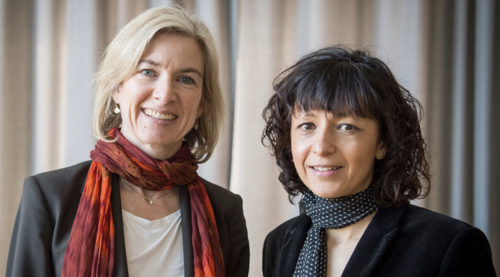
Andrea Ghez, Photograph By Alex Welsh, The New York Times/REDUX
By Victoria Jaggard, SCIENCE Editor, National Geograhic
Who doesn’t love a black hole? These ultra-dense objects regularly star in movies, in popular idioms, and in a nonstop stream of headlines reminding us that Einstein was right.
However, we’ve had a scientific description of black holes for just over a hundred years, when Karl Schwarzschild solved key equations in Albert’s newly minted theory of general relativity.
It took scientists until the 1960s to then move black holes out of pure mathematics and show that they can, in fact, form across the cosmos.
These days, we have evidence of black holes eating stars, messing with the motion of nearby objects, belching out jets of high-energy particles, and crashing into each other with such force they send ripples through the fabric of spacetime.
At the same time, our telescopes are getting so powerful, astronomers were able to capture the first-ever direct glimpse of a black hole’s gaping maw in 2019.
Now, three researchers are sharing the 2020 Nobel Prize in Physics for their work making black holes such scientific all-stars. One, Roger Penrose, was part of the team that offered the first evidence black holes exist in nature.
The other two, Reinhard Genzel and Andrea Ghez (pictured above), conducted foundational work showing that a whopper of an invisible object (thought to be a supermassive black hole) lurks in the center of our galaxy, the Milky Way.
The award makes Ghez only the fourth woman to ever win the physics Nobel, which is simultaneously wonderful and awful. Today, biochemist Jennifer A. Doudna (below left) and microbiologist Emmanuelle Charpentier (below right), who developed a revolutionary tool to edit genes of animals, plants and microorganisms, became only the sixth and seventh women to win the chemistry Nobel since 1901.
People “must be very open about the challenges that women face,” Doudna told us in a 2019 interview.
This morning, reacting to the prize, she told reporters: “It’s great for especially younger women to see this, and to see that women’s work can be recognized as much as men’s.”

Jennifer A. Doudna and Emmanuelle Charpentier, Photograph By Alexandre Heinl, Picture Alliance/DPA/AP
When we crunched the numbers a couple years back, we found that out of 881 individuals who won any of the Nobel Prizes between 1901 and 2016, only 48 were women.
Even with this year’s wins, the laureates chosen in recent decades have done little to advance that cause, or to improve equally stark problems with people of color winning the awards.
As I wrote this time last year, the Nobels are an opportunity to celebrate the wonder and value of science and discoverers. But that does not exempt the awards from scrutiny. And while widespread criticism has led the Nobel committees to make tweaks to the nomination process, fixing things means also addressing ongoing systemic bias in the sciences.
Even now, as the world battles a raging pandemic and political turmoil, let’s make sure we don’t let efforts to improve diversity and inclusion in the Nobels fall into a black hole.

